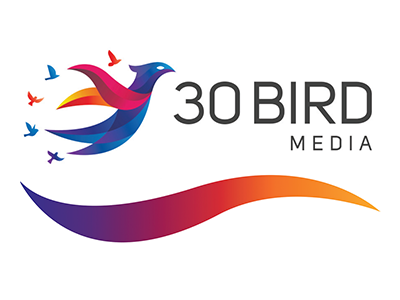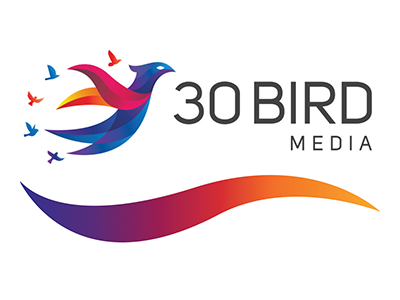 |
Project Management - Advanced: Project Integration and Plan Development |
0.50 |
This course will cover how to measure data during project integration and differentiate between project and product life cycles. You will also learn how to identify the importance of developing a project plan, the elements of a project plan, the key input required for project plan development, and methods used in project plan development. |
 |
Project Teams: Preparing Teams for Project Work |
1.00 |
Building a project team is more complex than assigning employees to the team. Team members must feel a sense of dedication to other team members, as well as to the project itself. Members who are not dedicated to the project team often disregard meetings, deadlines, and commitments, causing the entire team to suffer. To avoid these problems, the team managers and supervisors need to encourage team building to benefit the project, the team members, and the organization.
In this course you will learn to: empower and motivate a project team and develop positive culture in a project team, identify the causes of change in a team and manage change, and improve existing project teams. |
 |
CWNP Certified Wireless Specialist CWS-101 Exam Prep |
1.00 |
Exam Prep to accompany 30 Bird's CWNP Certified Wireless Specialist - Exam CWS-101 course. |
 |
GED: Social Studies - Unit 5: Post-Test |
0.25 |
Welcome to Unit 5: Post-Test. This post-test covers civics and government, US history, economics, and world geography. At the end of this post-test is a table that matches each test question to the content it covers. Use it to review and content you haven't mastered. |
 |
Project Management - Basic: Scope Definition, Verification, and Change Control |
1.50 |
This course will cover how to identify the process and benefits of scope definition and verification, and develop a work breakdown structure (WBS) and work package. You will also learn how to identify the types of information that stakeholders need in order to verify a project’s scope, and determine the timing of scope verification. You will be able to better understand how to control changes in project scope, identify the benefits of a scope change control system, and describe why it’s important to create a project database. |
 |
Indoor Air Quality |
1.00 |
This course covers indoor air quality (IAQ) and useful associated skills. You will learn the difference between sick building syndrome and building-related illness, as well as the conditions that cause these illnesses. You will also learn model IAQ policies and practices. |
 |
Understanding the Behavior of Children and Youth |
2.00 |
The development of children and youth can cause them to behave in ways that can be trying for even the most knowledgeable and experienced staff. When staff understands what is driving the behavior, they can help to guide and encourage acceptable behaviors. This course will provide participants with the knowledge and skills necessary to prevent unwanted behavior by meeting the needs of children and youth before they act out. |
 |
Conventional Forcible Entry #701 (Instructor Guide) |
1.50 |
This is the Instructor Guide for Lesson #701 Conventional Forcible Entry. This Instructor Guide is intended to prepare a lead instructor to deliver this course curriculum. Included in this guide is a review of lesson content, lesson resources, and required lesson materials. The lead instructor must pass this instructor guide course with a minimum score of 80% to receive the course materials for this lesson. |
 |
CompTIA A+ Core 2 220-1102 Exam Prep |
1.00 |
Exam Prep to accompany 30 Bird's CompTIA A+ Certification, Core 2 - Exam 220-1102 course. |
 |
Sales Skills: Advanced: Developing a Winning Strategy |
0.50 |
This course will focus on examining consulting strategies and developing solutions for clients. |
 |
Creativity and Innovation: Personal Creativity |
1.34 |
Creativity is often considered a talent that some people have. Actually, creativity's a skill that everyone can nurture through exercise and practice. You can prepare yourself both mentally and physically to be creative.
In this course you will learn to: prepare yourself mentally and physically to be creative, and use your experiences, innocence, intuition, and sense of adventure to increase your creativity. |
 |
Motivation: Identifying, Planning, and Implementing: Using What You've Learned |
0.50 |
In life, to be a successful, you must have a plan. Napoleon Hill, author of Think and Grow Rich, said, “Create a definite plan for carrying out your desire and begin at once, whether you ready or not, to put this plan into action.” This course has provided you with the information and—we hope—the inspiration to improve your motivational skills and work toward personal success. The final two steps are up to you: You must implement what you have learned and continue to work on improving your skills.
In this course you will learn to: work toward improving your motivational skills by using the 21-day habit and satori, and use resources, including websites and books, to continue working on your motivational skills. |
 |
Anger Management |
1.00 |
Anger is a set of physical responses, emotions, and behaviors triggered by a perceived threat or frustration. Anger can be harmful or helpful, depending on how you cope with your anger and the anger of others. This course will explore how to understand your anger better and manage your anger responses. You'll also examine the causes of anger and ways to use it constructively. |
 |
Paraprofessional Math Skills 2: Geometry and Measurement |
2.50 |
This course covers Paraprofessional Math Skills: Geometry and Measurement. It is just one out of three Paraprofessional Math Skills courses, and one out of eight ParaPro prep courses that will prepare you on K-12 topics. This course will help you develop your knowledge of these mathematical concepts and help you apply them to abstract and real-life situations. After taking these prep courses, you should be prepared for the ETS ParaPro Assessment. This course can be taken as a stand-alone learning event, as part of a broader paraprofessional curriculum, or in preparation for the ParaPro Assessment.
After completing this course, you will be able to:
Understand and represent time and money in more than one way.
Convert between units or measures in the same system.
Identify basic geometrical shapes.
Perform computations related to area, volume, and perimeter for basic shapes.
Graph data on an xy-coordinate plane. |
 |
Infectious Diseases: Causes and Symptoms |
1.00 |
An infectious disease is an illness that is caused by organisms such as bacteria, viruses, fungi, and parasites. Many of these organisms live in or on our bodies, and are normally harmless. But under certain circumstances, they can cause disease.
Course Learning Objectives:
- Describe infectious disease, and the ways in which germs that can cause infectious disease are spread.
- Identify common symptoms of infectious diseases, and why young children are vulnerable to infectious diseases. |
 |
E-Mail Etiquette: E-Mail Messages |
0.50 |
In this course, you will learn how to take advantage of the headers in e-mail messages. You will learn about the “To” field, in which you should type the recipient’s e-mail address. You will also learn when to send carbon copies and blind carbon copies of messages. You will learn the importance of writing a proper subject field for e-mail messages and that the header also includes the date and time of sending messages. Finally, you will learn how to construct the body of an e-mail message, add a personal touch to your messages by including a proper greeting, relay information by placing it in the appropriate order, and use different types of lists effectively. You learned the correct way to write long e-mail messages to keep recipients interested in the information and how to effectively close e-mail messages. |
 |
Forklift Safety |
1.00 |
This course covers the proper handling and safe operation of forklift truck machinery. This includes some of the hazards operators face as well as tips for proper load centering and proper load capacities to prevent tip-overs. |
 |
School-Age Care as a Family Service: Emphasis on Planning Opportunities for Family Involvement |
2.00 |
The foundation for getting parents involved in school-age programs is to keep parents well informed about what is happening in the program. Quality programs also provide parents with opportunities to make suggestions and give feedback on program services through suggestion boxes, feedback forms, and surveys. When parents are encouraged to have input in the program, they develop trust and confidence in the program, and feel a sense of pride and ownership. They are more likely to participate as resourceful partners with program staff when they know their ideas are welcome and valued. Finally, because parents are all different from each other, it's important to provide many different opportunities for them to connect with the program. Staff in quality school-age programs recognize that all parents don't have to be involved in the same way. |
 |
Microsoft Excel 2019 Complete |
24.00 |
Excel 2019 Complete provides the concepts and skills to be productive with Microsoft Excel 2019, starting with fundamentals and working up to advanced tools and techniques. This course maps to the objectives of the Microsoft Office Specialist and Expert exams for Excel 2019. Objective coverage is marked throughout the course, and you can download an objective map from 30bird.com.
Students will benefit most from this course if they want to use Excel 2019 to perform real-world tasks, from common workplace tasks to complex operations with large amounts of data. If students intend to take a Microsoft Office Specialist or Expert exam for Excel, this course offers complete coverage of all the objectives for both exams.
The course assumes students know how to use a computer, and that they're familiar with Microsoft Windows. It does not assume that they've used a different version of Excel or another spreadsheet program before. |
 |
Business Accounting: Stockholders' Equity |
1.50 |
This course will cover how to identify various types of stocks and calculate the value of a corporation’s stock as well as how to use financial ratios to calculate book value and market value per share. You will also learn how to identify the components of stockholders’ equity and report stockholders’ equity on financial statements. |
 |
OSTPD - Supporting Attendance through After School Programming |
1.00 |
This training will cover a number of areas regarding how after school programs can support youth attendance in school. By looking at and exploring the connection between after school programming and attendance in school, we see how after school programming supports attendance at school as well as how to coordinate with the school in order to maximize the positive impact of after school on school attendance through collaboration. |
 |
I Belong: Supporting Social Awareness and Interpersonal Skills |
2.00 |
We all have lived full lives with varied experiences, both positive and negative. Whether we are aware or not, our experiences, including our social, political and cultural beliefs and background, affect our practice with youth. During this course, participants will learn about how culturally grounded beliefs and background affect our practice with youth, how to help raise our awareness of those factors, and reflect on current and new strategies that support the development young people’s social-awareness and interpersonal skills. |
 |
Young Worker Safety Training |
0.75 |
This course covers federal laws regarding working minors as well as common workplace hazards. |
 |
Exploring Developmental Needs and Characteristics: Age Group 5 to 7 for Paraprofessionals |
1.00 |
Certain developmental needs and traits are associated with younger school-age children, while others are typical of older school-age children. While the differences between school-age children of different ages are not clear-cut, there are some general traits and tasks that are often associated with younger school-age children. This course delves into the specific traits of students between the ages of 5 and 7. |
 |
Business Finance: Portfolio Risk |
0.75 |
This course will focus on how to use the diversification principle to invest in portfolios as well as how to use the Capital Asset Pricing Model. You will also learn how to calculate different types of financial ratios. |


























